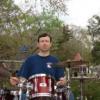
Posted
Here is an orchestral piece in a symphonic style, which I recently created with Synfire. This Software can do really amazing things.
The sounds are by EWQL orchestra.
"Symphonische Fantasie"
(http://www.box.com/s/if13avt7zjtpe9ab99j1)
© Jürgen Kraus 2012
Thanks for listening
Jürgen
Di., 28.02.2012 - 20:53 Permalink
That's a wonderful piece. Really great composition!
How long did you take to complete this score and what kind of workflow did you pursue?
I've also tried myself to compose classical music with Synfire (e.g. Sonatina in C for Oboe and Piano) but there's still a long way for me to go...
Di., 28.02.2012 - 21:17 Permalink
cool chordal movement there. how did you do it?
Di., 28.02.2012 - 22:02 Permalink
Nice work. Has a big sound to it. Could you describe your work flow, or post the file itself, or a photo of containers? The more we share with each other, the more we will all learn.
To me the amazing thing with SFP is you can finish a piece and then go back experiment with alternate chords or even progressions. That alone is equilavent year to years at theory.
Mi., 29.02.2012 - 08:08 Permalink
Thanks for your nice comments.
Only a few basic material is needed to create a piece like this. Basically I used three short arrangement phrases here. Each of them is only a few seconds. The first one is that part that enters at 00:53, the second one is the flute/oboe motive which is first introduced at 00:29, then plays between between 6:57 and 9:20 and returns once again at the end (a very simple phrase, only triads with its inversions). The third one is the accompaniment to the flute/oboe motive that enters around 8:10.
The main part of the work was transforming and combining those phrases in Synfire. First I imported the phrases as an accompaniment and played around with the chord palettes. This is the part of the work, which I enjoy most. If a well working phrase is loaded I could stay hours and hours playing at the palettes with it. I’m really addicted to that feature of Synfire. You can easily blow a short phrase of a few seconds up to a several minutes part this way. So I feel finding a chord progression is not a task, but it’s just like a game with this tool.
In general it can be said that many phrases are a kind of "multi functional“, what means that they can be used in different contexts. Changing some parameters and using a different harmonic progression can give them a completely different mood. For example the accompaniment to the flutes/oboe-motive that enters at 8:10 I already used at the piece I posted earlier (see here: https://users.cognitone.com/content/orchestral-piece-created-harmony-navigator, there it’s the strings accompaniment to the flute motive that enters around 5:00). Here I used a different processing algorithm at the used MIDI effect (outside of Synfire) and changed some parameters after the import into Synfire. Of course also the tempo and the harmonic progression are different.
Therefore I think that it‘s not necessary to build up a huge phrase library. Collecting only a small assortment of well working phrases, which can be used in different music pieces, is also a possible approach and can give your music an unique style. Better not to overload a piece with hundreds of different phrases which the ear finally can’t memorize.
I worked about 2 month on this piece. I had a lot of fun with this project, so I was almost a little sad when it was finished. But of course I already started a new one...
Mi., 29.02.2012 - 12:13 Permalink
Therefore I think that it‘s not necessary to build up a huge phrase library. Collecting only a small assortment of well working phrases, which can be used in different music pieces, is also a possible approach and can give your music an unique style. Better not to overload a piece with hundreds of different phrases which the ear finally can’t memorize
Yeah that's the point: collecting only a small assortiment of well working phrases
First must study the basics of classical composing
Ho do you recognize a motive
Ofcourse you can convert a music sheet with classical music notes to midi notes with some programs and extract there some phrases from.
Mi., 29.02.2012 - 17:02 Permalink
Thanx.. That's a very helpful insight. I've recently started playing around with the harmony chord substituition feature. Have not payed much attention to the pallettes for building chord variation.
Thanx very much. Yeah, I've painted myself into a corner more than a few times, by using too many phrases, with not enough repeatability for the ear and brain to latch onto.. Sounds like endless improvising without a firm structure.
Thanx again for your explaination..
Do., 01.03.2012 - 21:11 Permalink
Ofcourse you can convert a music sheet with classical music notes to midi notes with some programs and extract there some phrases from.
You can combine almost everything with everything. Don't stay too long with theoretical studies, better do some experimental things and see what happens. Here is one of my more experimental orchestral works, which I did with Synfire to see what’s the possibilities with the program:
"Fantasie für Hörner und Streichorchester"
http://www.box.com/s/1x0r54h30pljzr1ee0q1
© Jürgen Kraus 2011
In this piece I tried to combine some phrases from Mozart with those from a piece of a rock band. Although the result maybe is not perfect, I think it demonstrates that such a kind of phrase combination is possible.
Any ideas where the phrases I used here come from? The Mozart part should be relatively easy to identify (if you know the piece). At the "rock band part" I've driven a little more effort to conceil the
origin. Maybe you could recognize it at the rhythmical structure, particularly at 4:20. The sounds are by Halion orchestra here.
Do., 01.03.2012 - 22:37 Permalink
very cool. i like it alot. the endless combination of midi files from every know origin is almost overwhelming. its a great deal of fun to forget about writing "serious" music sometimes and just take SFP for a ride and get the demons out writing something completly wild.
Fr., 02.03.2012 - 20:35 Permalink
Yeah duderanch, another cool track from you. I like your music, because every track is completely different from the other. But I'm still most fascinated about your "Turdstep" track. It's my early morning wakeup call.
the endless combination of midi files from every know origin is almost overwhelming.
Yeah, good music has no genre boundaries. That's also my message.
Sa., 03.03.2012 - 18:24 Permalink
Thanks Juergen. I played the drum part in on an old v drum kit. Then in Ableton live used the max for live plugin schwartzonator chord plugin to generate the chords into SFP. So the chords and drum are really from the same midi.
You are probably the only person in the world that enjoys the jb turdstep. Thnx. It had to be done.




